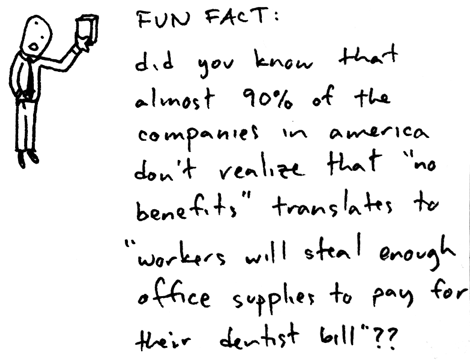Social media spam can take various forms. About two (or a bit more) years ago I used to be a social media newbie myself and I remember doing what I would now call spam: I registered at social media networks to drop my own links.
This was once a reason why I joined Sphinn but I was lucky enough to learn what spam is very quickly and soon I knew that was not the way to benefit from the network – so in just a couple of weeks I was already active participating in and adding quality to the community.
The reason I am saying this is that social spam can really be innocent (though most of the time it isn’t). So if you plan to engage in social media networking (and marketing) and do it right, you need to educate yourself, to learn some basic rules and ethics and to find out how it actually works.
This post looks at various mechanisms social media sites use to get rid of or fight spam.
Limiting the Benefits

Image credit: Toothpaste for Dinner
The widespread (and for most networks, must-take) step to getting rid of spam is not giving the spammers a reason to join. That was the reason (I guess) why Sphinn once went with “nofollow” links (unless the story hits the front page).
That was the reason why I decided to make MyBlogGuest available for registered users only (not to encourage members to drop links to their blogs whenever they can).
![]() Giving no reason to spam is the only way to avoid self-promotion.
Giving no reason to spam is the only way to avoid self-promotion.
![]() However it poses another huge problem for the network owner: the ability to promote yourself is the driving power of any network. By limiting the benefits to join, you risk scaring away valid members as well.
However it poses another huge problem for the network owner: the ability to promote yourself is the driving power of any network. By limiting the benefits to join, you risk scaring away valid members as well.
The ability to balance between limiting the self-promotional benefits and still giving the users a solid reason to join and participate (giving proper incentives) makes a successful and (almost) free-of-spam community.
Banning the Spammers

Image via hilath.com
Banning members from the network is another way to get rid of spam. Yes, there’s no an easy answer to how banning should be executed. Creating a properly-working, fully-automated algorithm to catch and filter spammers is too hard (firstly, because there’s no clear definition of what spam really is). Besides, “real” experienced spammers never hesitate to create new multiple accounts using new IP addresses and registration info.
Social media networks have been experimenting with various mechanisms of banning, here are a few of them:
1. Banning in Sessions
StumbleUpon is the best example here. It’s been noticed that it has some “banning” periods when it starts removing multiple accounts in bulk.
![]() The mechanism works well getting rid of long-term spammers who have been developing profiles for months. The only way for them is to start from scratch.
The mechanism works well getting rid of long-term spammers who have been developing profiles for months. The only way for them is to start from scratch.
![]() Many established, loyal members may fall pray to the process. Many of them are influencers driving real value. Chances are they will never be back.
Many established, loyal members may fall pray to the process. Many of them are influencers driving real value. Chances are they will never be back.
2. Silent Banning
Reddit is known for the very creative form of banning: invisible one. What it means is that the user may be absolutely unaware of the fact that he is banned: he may go around submitting and voting stuff – what he doesn’t know is that his votes and submissions are invisible to everyone except him.
The only way for the user to make sire he is banned is to once logout and see an error page instead of his profile page.
![]() This seems to be the perfect way to keep spammers under control: keeping them under illusion they are spamming while they are just ghosts.
This seems to be the perfect way to keep spammers under control: keeping them under illusion they are spamming while they are just ghosts.
![]() What about genuine members who were banned by mistake?
What about genuine members who were banned by mistake?
Building Manually Approved Closed Community

Image by Roy Nixon
In an effort to avoid any form of spam some new emerging communities prefer to stick to an application-based (“beta”) registration process. This works like this: you submit an application to join – the editor reviews your application and approves you (if you seem to be worth it). Example: Blog Engage
![]() Manual review is surely the best way to maintain the genuine membership.
Manual review is surely the best way to maintain the genuine membership.
![]() The approach is “anti-social” to some extent: “why would you think I am unworthy by default and have to qualify to fit your community?” It may scare away many people from ever trying to join.
The approach is “anti-social” to some extent: “why would you think I am unworthy by default and have to qualify to fit your community?” It may scare away many people from ever trying to join.
Like I said, there’s no easy solution to getting rid of spam. Like you have seen from the above, fighting spam usually limits the growth and development of the community itself. Have you ever seen any effective way to fight spam without sacrificing the community benefits?





